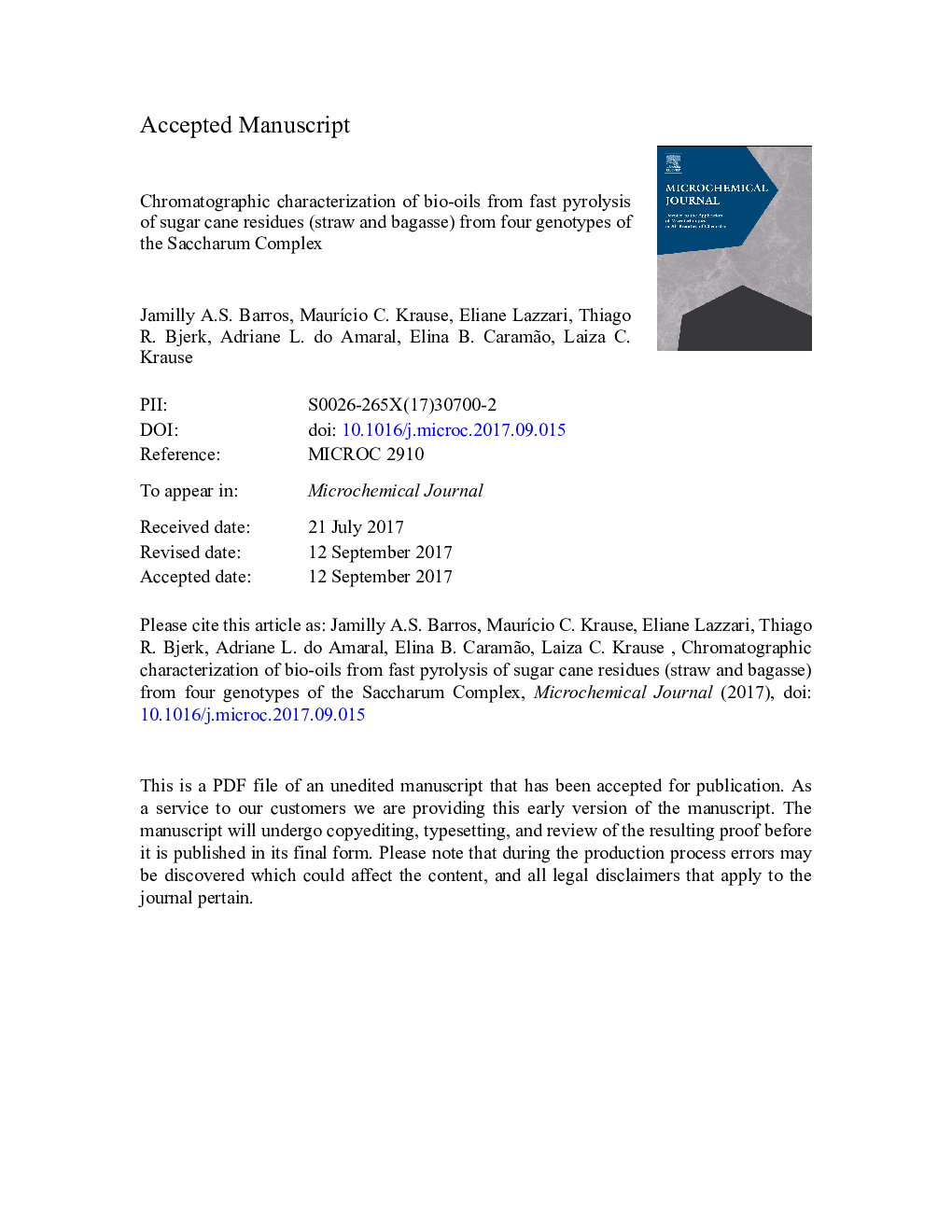| Article ID | Journal | Published Year | Pages | File Type |
|---|---|---|---|---|
| 5138927 | Microchemical Journal | 2018 | 25 Pages |
Abstract
The goal of this paper is to compare the amount and quality of bio-oils produced from these residues (bagasse and straw), intending to aggregate value to these materials and to indicate their best uses. The bio-oils were analyzed by GCÂ ÃÂ GC coupled to mass spectroscopy, allowing the detection and identification of their major constituents. Phenols were the main classes of identified compounds that can indicate the use of the bio-oil as alternative source of raw material for chemical industries. It is important to highlight that not only the straw but also the bagasse produced similar bio-oils, differing only in the relative amount of these compounds in the bio-oil, allowing an integrated utilization of these materials. The goal of this paper is to compare the amount and quality of bio-oils produced from these residues (bagasse and straw), intending to aggregate value to these materials and to indicate their best uses. The bio-oils were analyzed by GCÂ ÃÂ GC coupled to mass spectroscopy, allowing the detection and identification of their major constituents. Phenols were the main classes of identified compounds that can indicate the use of the bio-oil as alternative source of raw material for chemical industries. It is important to highlight that not only the straw but also the bagasse produced similar bio-oils, differing only in the relative amount of these compounds in the bio-oil, allowing an integrated utilization of these materials. The identified compounds are approximately the same in all the samples, differing only in the relative amount of these compounds in the bio-oils. The major compounds were slightly different in the studied bio-oils, but they can be represented by benzofuran-2,3-dihydro, 4-vinyl-guaiacol, syringol and 5-hydroxy-methyl-furfural. The aldehyde contents increased significantly in the Miscanthus and Erianthus bio-oils samples, mainly due to furfural derivatives, which are not found in the other samples. In addition, only the species Erianthus sp. presented yield in bio-oil superior to the commercial specie, which may indicate its use in the production of furfural and derivatives.
Related Topics
Physical Sciences and Engineering
Chemistry
Analytical Chemistry
Authors
Jamilly A.S. Barros, MaurÃcio C. Krause, Eliane Lazzari, Thiago R. Bjerk, Adriane L. do Amaral, Elina B. Caramão, Laiza C. Krause,
